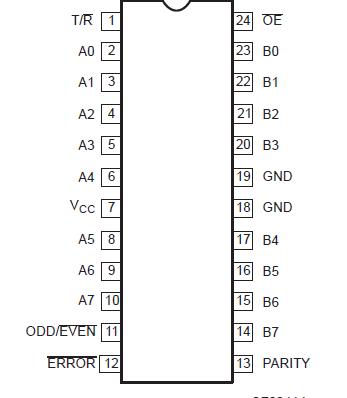N74F657N: Features: • Combines 74F245 and 74F280A functions in one package• High impedance base input for reduced loading (70mA in high and low states)• Ideal in applications where high outp...
floor Price/Ceiling Price
- Part Number:
- N74F657N
- Supply Ability:
- 5000
Price Break
- Qty
- 1~5000
- Unit Price
- Negotiable
- Processing time
- 15 Days
SeekIC Buyer Protection PLUS - newly updated for 2013!
- Escrow Protection.
- Guaranteed refunds.
- Secure payments.
- Learn more >>
Month Sales
268 Transactions
Payment Methods
All payment methods are secure and covered by SeekIC Buyer Protection PLUS.

 N74F657N Data Sheet
N74F657N Data Sheet







